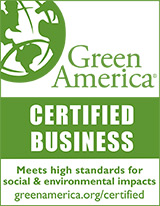Mattress Toxicity - TempurPedic Update
At Good Night Naturals we recognize the importance of health and comfort in a great night's sleep, yet many mattress manufacturers are negligent when it comes to providing a holistic approach to your health. What you don't see can cause great harm to the health and welfare of you and your loved ones. More evidence is mounting that mattresses made with "memory foam" which contains dangerous chemicals, is causing allergic reactions and serious side-effects.
Tempurpedic Sued Over VOC's and Memory Foam Safety.
A class action suit has been filed in California courts alleging that Tempurpedic’s memory foam mattresses contain harmful VOCs. The lead plaintiff in the case, Michael Dodson, claims that Tempurpedic mattresses and pillows release volatile organic compounds which can result in allergic reactions as well as possible long-term complications, and that the company is aware of issues. They believe the company has minimized the problem when advertising their products by stating that the odors will dissipate and that products are VOC-free, when formaldehyde and other odors may continue to be released for months.
Tempurpedic and VOCs
The class lawsuit brought against Tempur-pedic is represented by attorney Allen Stewart of Dallas, Texas, and seeks many forms of recourse including an injunction, constructive trust, and restitution. It claims that Tempurpedic violated business laws within the State of California, where the suit was filed.
One of the primary reasons for the suit states that Tempurpedic not only downplayed VOCs in their memory foam mattresses and pillows but also refers to the fact that they failed to warn customers of a potential link between reactions and allergies with previous customers and their products.
Another key issue brought by the plaintiff is that Tempurpedic and their distributor network informs customers that the odors emitted from their memory foam should only last a few days and is harmless. The class action suit claims that the company has been aware of problems reported by some consumers like allergic reactions attributed to the odors or side effects like headaches since at least 2007, and has failed to notify consumers of these potential problems.
Their other claim is that Tempurpedic’s mattresses emit formaldehyde, a strong VOC and known carcinogen, even though they claim their products are ‘allergen-resistant’ (though this claim likely refers to dust mites rather than chemical sensitivities). The claim on the attorney’s website states that formaldehyde has been identified in laboratory testing of Tempurpedic products.
Tempurpedic’s Reaction
Tempurpedic has not officially released a public response yet, but the lawsuit (or perhaps recent FTC actions) already appears to have had some effect on marketing, as the company’s website removed a page in the last few months which had the claims mentioned in the lawsuit (“free of harmful VOCs (volatile organic compounds) such as formaldehyde and CFC (chlorofluorocarbon)—harsh chemicals that can trigger allergies and asthma.”), and now makes no official mention of the issue. They had also removed all reviews from their website for several months (since July 2013), though many appear to have been restored in the last few weeks.
What are VOCs?
VOC stands for volatile organic compounds which can be released from products created from unstable organic chemicals or compounds, often referring to petroleum or byproducts thereof, including the polyurethane and adhesives used in traditional memory foam. More than 60 compounds have been identified which can cause allergic reactions and other health concerns, with 18 of those requiring a warning label. Formaldehyde is just one of the well-known VOCs, and its concentration is easier to measure than many of the others.
According to the EPA website http://www.epa.gov/iaq/voc.html, VOCs are commonly found in paint, organic solvents, furniture, foams and degreasing agents among other commonly used products. The concentration is often higher indoors, and can lead to many health effects, including lung irritation, nerve damage, kidney damage, endocrine disruption and several are also considered to be potential carcinogens.
What’s The Deal with VOCs and Mattresses?
Although Tempur-pedic is currently being sued over VOCs, they are not the only company to run afoul of problems related to the release of volatile organic compounds and advertising claims. EcoBaby Organics Inc., Essentia Natural Memory Foam Company Inc., and Relief-Mart Inc. were recently asked by the FTC to stop advertising that their products are VOC-free until proven to be so. Other companies including Target, Wal-Mart and Babies R Us were also sued earlier this year in California due to undisclosed Tris fire retardants in baby mattresses.
As the organic and natural movements continue gaining popularity and awareness, more and more consumers are becoming concerned about toxic or potentially harmful products. VOCs have been a primary target in the U.S. and Europe, since several of them have the potential to interfere with endocrine systems, hormones, and other bodily functions. Furniture items are of particular concern since their outgassing can affect indoor air quality, and since people are in close proximity to their mattresses for several hours each day.
Are Tempurpedic and Other Memory Foam Mattresses Safe?
Memory foam mattresses have taken the bedding industry by storm and continue growing in sales, yet these recent actions have many consumers wondering whether it is safe to go to bed at night. The answer is complex, primarily depending on the type of memory foam mattress you own or choose to buy, as well as your personal sensitivity. Manufacturers are also not required to disclose ingredients at this time, and chemical claims are largely on honor system until challenged.
According to SleepLikeTheDead, a consumer review analysis website, nearly 18% of Tempur-pedic owners have complained of issues with off-gassing and odors. This does represent a higher percentage than memory foam mattresses as a whole, which usually average closer to 15%, and is significantly higher than some other brands of which reviewers may complain of odor in as few as 3-5% of reviews. (For more information, check out Memory Foam Mattress Guide’s helpful comparison article on memory foam and offgassing.)
Here are a few key points to consider if you are concerned about memory foam safety:
-
Traditional memory foam – This is the original petroleum-based memory foam, typically most associated with the release of VOCs. About 15% of owners complain of strong odor.
-
Plant-based memory foam – This type of material replaces a portion of the petroleum-based ingredients with plant-based ingredients, reducing synthetic chemicals and typically resulting in less odorous products. About 3-8% of owners complain of odors.
-
Density – Higher density beds have more polyurethane polymer and thus greater propensity to off-gas than low density foams.
-
Adhesives – Some of the harshest VOCs can be found in the adhesives used to assemble the memory foam beds. Water-based and green options exist, and may help reduce VOC levels in end products.
-
Flame Retardants – Flame retardant chemicals like PBDEs and Tris can outgas and cause reactions or negative side effects. Non-chemical fabric barriers (usually made of silica and other fibers) may be ideal for preserving safety without adding more chemicals.
-
Manufacturing Process – Most foam manufacturers use types of blowing agents to develop foam structures, which can contribute to chemicals in end products and pollution. A small number use vacuum systems (variable pressure foaming) to create their foams which reduce the chemical profiles.
-
According to SleepLikeTheDead, only about 1.5% of memory foam mattress owners experience side effects related to odor that are significant enough to cause them to return their mattress.
While only time will tell how Tempurpedic fairs in their latest lawsuit, the trends toward safer consumer products and greater transparency are clear. Consumers increasingly want to know what is in the products they buy and how it might affect their families and the environment, which is one of the trends we mentioned in our recent article on the Future of the Memory Foam Mattress Industry. However, for major mattress brands like Tempurpedic, Sealy, Simmons and Serta, this represents a significant shift in their business models that may prove difficult as product secrecy, exclusivity and limited consumer information have been the modus operandi for decades.
Published on December 12th, 2013 | by Mattress Journal










